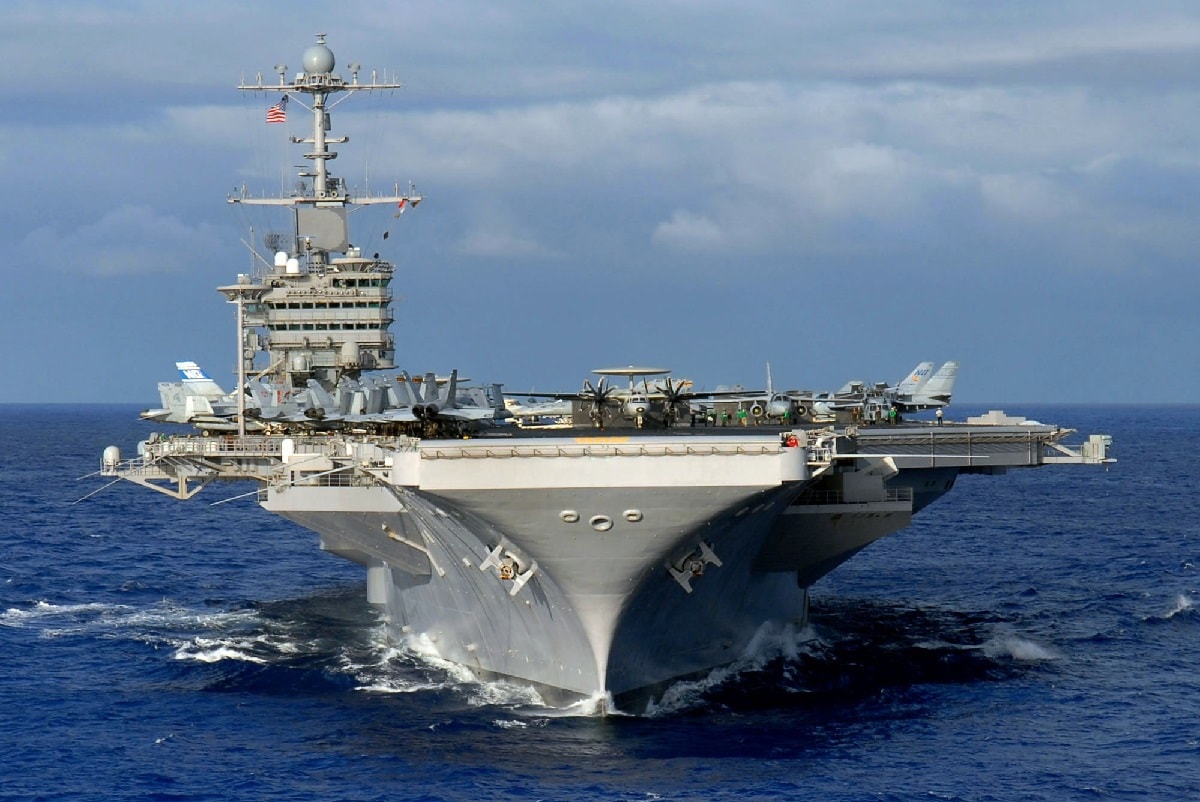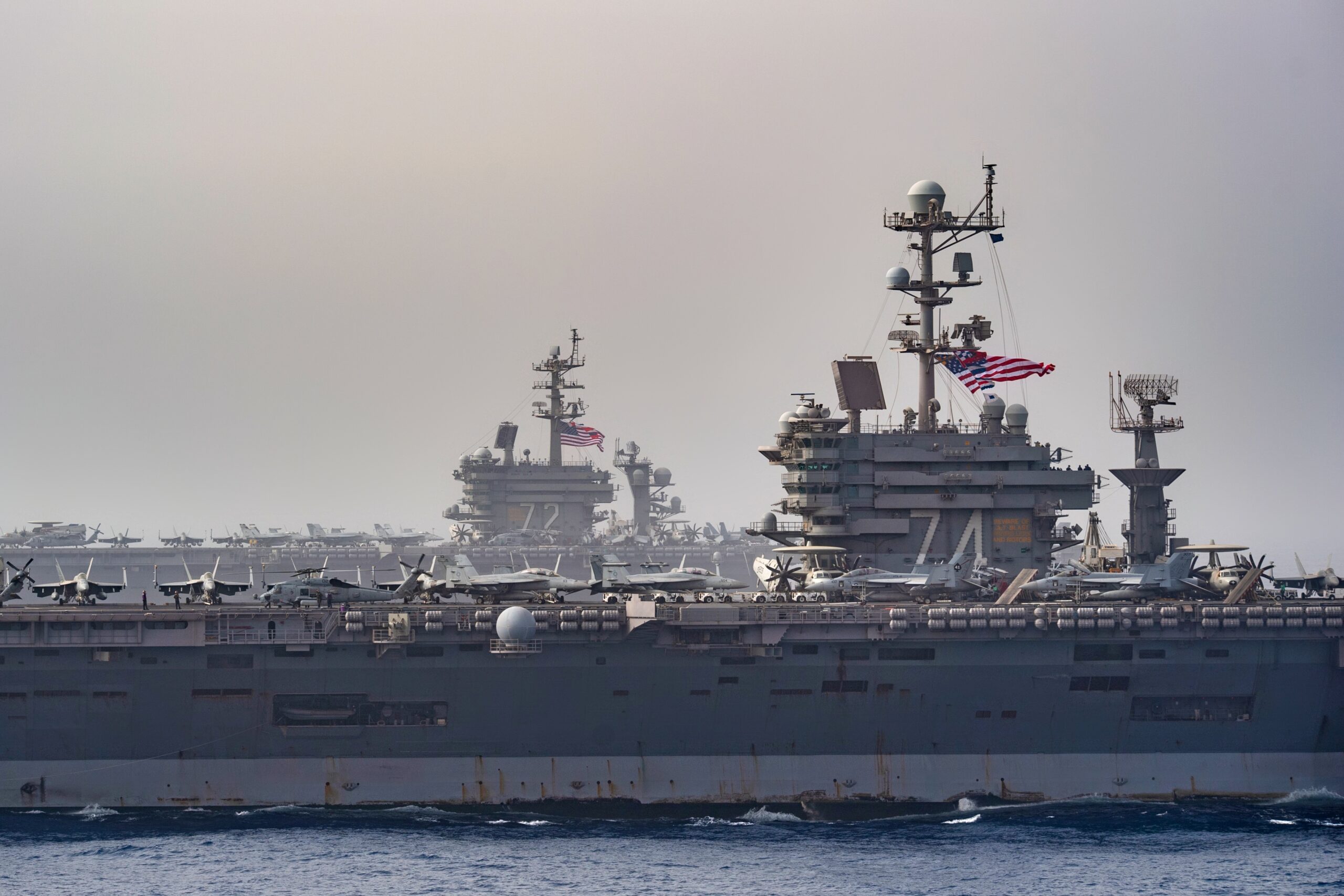Key Points: The USS John C. Stennis aircraft carrier‘s critical midlife overhaul (RCOH) faces significant delays, pushing its return to service to October 2026—over 14 months late.
-This setback, attributed to shipyard workforce and material shortfalls echoing issues from the USS George Washington’s troubled RCOH, sidelines a key naval asset.
-While the Navy aims to improve crew quality of life during the extended maintenance period, the delay exacerbates strain on a carrier fleet already stretched thin by global deployments in the Red Sea and Indo-Pacific.
-This impacts operational readiness and the Navy’s ability to meet global commitments.
Aircraft Carrier John C. Stennis Out of Action Since 2021: Why?
At a time when the U.S. Navy could use all of the aircraft carriers it can get for global deployments in several hot spots, the USS John C. Stennis is still out of action.
The carrier is at port for a midlife overhaul and refueling that is now going to take 5.5 years – more than 14 months longer than previously planned.
The John C. Stennis started the long process of the overhaul in 2021. The Navy originally thought it would be ready in August of this year.
But that date has been pushed back. Now it appears the ship won’t take to the seas again until October 2026. The carrier is at an outfitting berth at Newport News Shipbuilding in Newport News, Virginia.
The Problems Started with the USS George Washington
The delays are due to “workforce and material shortfalls” that delayed the USS George Washington’s delivery because of the Covid-19 pandemic. NAVSEA said the delay was, “due both to mandatory growth work following ship condition assessments, as well as industrial base challenges.”
The George Washington had been at Newport News for nearly six years for a Refueling and Complex Overhaul (RCOH) process. The carrier made headlines for its abysmal conditions that led to several sailors committing suicide.
The Navy believes that quality of life issues on carriers going through refueling and overhaul have been improved and the problems solved. Sailors should not have to face tragedy again.
Long Periods of Maintenance and Overhaul With Bad Living Conditions
The George Washington spent 2,120 days in RCOH and the Stennis has already put in 1,990 days of maintenance as of June of 2024.
NAVSEA believes that the Stennis must meet “habitability” standards before sailors can return to the ships to live on. The Navy has invested more funds to allow the sailors assigned to Stennis to move off base to improve morale.
“This includes additional months of crew berthing and to provide more off-ship housing in apartments vice barracks for sailors. Beginning with [Stennis] RCOH, no on-board housing is used for crew berthing for sailors during the RCOH. In previous RCOH availabilities, crew move-aboard occurred nearly a year before the ship re-delivered,” according to budget documents.
This will be a significant upgrade from the George Washington conditions in which there were few parking places, working wi-fi connections, and food that was considered subpar.
Why Is the Stennis Out of Action?
The John C. Stennis was commissioned in 1995 and it’s the seventh Nimitz-class carrier. Aircraft carriers must undergo RCOH at the half-way point in their 50-year lifespan. Numerous systems must get upgraded and the nuclear power plant receives ample attention.
When all work is done, the Navy believes the Stennis will be one of the most technologically-advanced carrier in the fleet.
The Delays Come At a Bad Time
The Stennis delays are not optimal for a carrier force that is stretched to the limit. Two carrier strike groups will be patrolling the Red Sea to take on the Houthi terrorists in Yemen. The Harry S. Truman carrier is already conducting daily combat operations against the Houthis. It will be joined by the USS Carl Vinson strike group that is re-deploying from the Indo-Pacific.
That means one less carrier to answer the China threat. A third of U.S. carriers are usually deployed, another third is getting ready to take to the sea, and the other third is in maintenance. Stennis is pushing that rule to the limit as it endures the RCOH delay.
Rotating Deployment Schedule
America needs global deterrence and force protection capabilities at all times. But the Navy must take into consideration the one third rotational model. Thus, it is somewhat of a misnomer to say that the Navy has 11 carriers since some will always be in maintenance and out of action.
Last summer, the USS Dwight D. Eisenhower returned stateside after a nine-month patrol in the Mediterranean Sea and Red Sea while the Israel battled Hamas and Hezbollah.
The Houthis are another problem that is sucking ship-power and manpower away from Europe and Asia at a time of war in Ukraine and a more aggressive China. U.S. carriers have been patrolling Japan, but they are periodically rotating away from East Asia.

Pacific Ocean (Feb. 6, 2007) – USS John C. Stennis (CVN 74) transits the Pacific Ocean prior to a photo exercise showcasing the entire John C. Stennis Carrier Strike Group (JCSSG) off the coast of Guam. JCSSG is conducting flight and Integrated Strike Group operations off the coast of Guam after entering the 7th Fleet area of responsibility Jan. 31. U.S. Navy photo by Mass Communication Specialist 3rd Class Ron Reeves (RELEASED)
This is a challenge for the Trump national security team that is prioritizing “lethality” for 21st century warfare. The president should be made aware of the maintenance problems with carriers – a condition he was probably in the dark about during the four years he wasn’t in the White House.
Hopefully work can be completed on the Stennis with no further delay. The Navy depends on its carrier strike groups greatly and as battle deployments crop up that require two carrier strike groups as in Yemen, the U.S. military must keep these contingencies in mind.
The rotational deployment rule for aircraft carriers keeps the efficacy of fighting a naval battle limited in scope.
About the Author: Dr. Brent M. Eastwood
Brent M. Eastwood, PhD is the author of Don’t Turn Your Back On the World: a Conservative Foreign Policy and Humans, Machines, and Data: Future Trends in Warfare plus two other books. Brent was the founder and CEO of a tech firm that predicted world events using artificial intelligence. He served as a legislative fellow for U.S. Senator Tim Scott and advised the senator on defense and foreign policy issues. He has taught at American University, George Washington University, and George Mason University. Brent is a former U.S. Army Infantry officer. He can be followed on X @BMEastwood.

